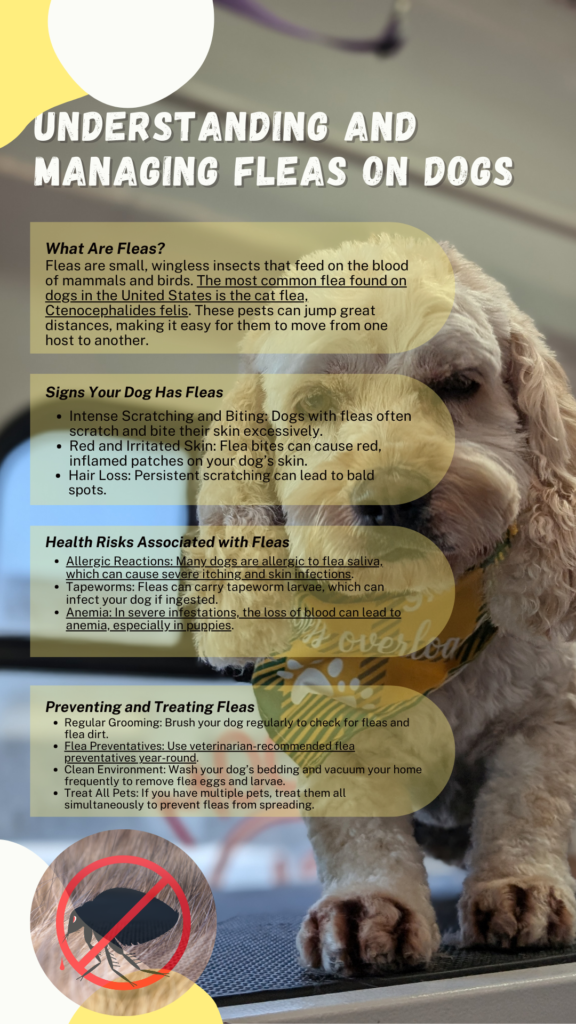Fleas are a common nuisance for dogs and their owners. These tiny, blood-sucking parasites can cause significant discomfort and health issues for your furry friend. Let’s dive into what you need to know about fleas and how to manage them effectively.
What Are Fleas?
Fleas are small, wingless insects that feed on the blood of mammals and birds. The most common flea found on dogs in the United States is the cat flea, Ctenocephalides felis. These pests can jump great distances, making it easy for them to move from one host to another.
Signs Your Dog Has Fleas
Detecting fleas early can help prevent a full-blown infestation. Here are some signs to look out for:
- Intense Scratching and Biting: Dogs with fleas often scratch and bite their skin excessively.
- Red and Irritated Skin: Flea bites can cause red, inflamed patches on your dog’s skin.
- Hair Loss: Persistent scratching can lead to bald spots.
- Flea Dirt: Small black specks (flea feces) on your dog’s skin or bedding are a telltale sign of fleas.
Health Risks Associated with Fleas
Fleas are more than just an annoyance; they can pose serious health risks to your dog:
- Allergic Reactions: Many dogs are allergic to flea saliva, which can cause severe itching and skin infections.
- Tapeworms: Fleas can carry tapeworm larvae, which can infect your dog if ingested.
- Anemia: In severe infestations, the loss of blood can lead to anemia, especially in puppies.
Preventing and Treating Fleas
Preventing fleas is much easier than dealing with an infestation. Here are some steps you can take:
- Regular Grooming: Brush your dog regularly to check for fleas and flea dirt.
- Flea Preventatives: Use veterinarian-recommended flea preventatives year-round.
- Clean Environment: Wash your dog’s bedding and vacuum your home frequently to remove flea eggs and larvae.
- Treat All Pets: If you have multiple pets, treat them all simultaneously to prevent fleas from spreading.
If your dog already has fleas, follow these steps to eliminate them:
- Flea Bath: Give your dog a bath with a flea shampoo to kill adult fleas.
- Flea Comb: Use a flea comb to remove fleas and flea dirt from your dog’s coat.
- Topical Treatments: Apply a topical flea treatment as directed by your veterinarian.
- Environmental Control: Treat your home and yard with flea control products to eliminate any remaining fleas and prevent reinfestation.
Conclusion
Fleas can be a persistent problem, but with the right approach, you can keep your dog flea-free and comfortable. Regular grooming, preventive treatments, and maintaining a clean environment are key to managing fleas effectively. If you suspect your dog has fleas, consult your veterinarian for the best course of action.
By staying vigilant and proactive, you can ensure your dog stays happy and healthy, free from the discomfort and health risks associated with fleas.

